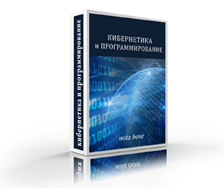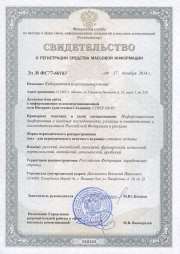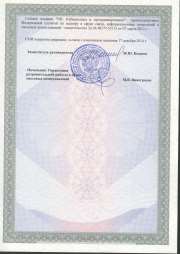MAIN PAGE
> Journal "Cybernetics and programming"
> Contents of Issue є 03/2016
Contents of Issue є 03/2016
|
Knowledge bases, intelligent systems, expert systems, decision support systems |
|
Mustafaev A.G. - Neural Network Model for Diabetes Patients Blood Glucose Prediction
|
|
pp. 1-5
|
DOI: 10.7256/2306-4196.2016.3.18010
Abstract: Diabetus melitus is a metabolic disorder caused by an absolute deficiency of insulin secretion and characterized by the inability of the body to maintain an adequate blood glucose level. Optimal doses and types of artificial insulin depend on many factors. In this paper the author proposes a neural network model of blood glucose prediction allowing to predict impending critical condition of patients suffering from diabetes. Implementation of the prediction system combined with an insulin pump creates a range of opportunitities for constructing a system of automatic blood glucose level control. The simulation was performed by using The Neural Network Toolbox of the Matlab 2015b environment due to a wide range of opportunities offered by the system, convenience of developing compex applications, advanced imaging study results. The results of the training process and verification of the proposed prediction model performance show that artificial neural networks of direct distribution can help to sustain a satisfactory blood glucose level at all stages of prediction. The average quadratic prediction error did not exceed 3 in the process of the research.

|
Telecommunication systems and computer networks |
|
Teimurov M.T. - Increasing Efficiency of the Coding Methods Used for Fiber-Optic Communication Lines
|
|
pp. 6-16
|
DOI: 10.7256/2306-4196.2016.3.19455
Abstract: The article is devoted to topical issues of coding in fiber-optic communication lines in the presence of the pattern effect, i.e. the effect of the dependence of the error rate in the process of information transfer on the kind of information. The object of the researh is the information coding methods. In his research Teymurov provides a general review of the coding methods used for fiber-optic communication lines with the pattern effect. Teymurov also analyzes disadvantages of the adaptive block coding method offered by A. S. Skidin and offers ways to eliminate them. The author examines the process of implementation of information coding methods based on the example of fiber-optic communcation lines. The author has also conducted the simulation of adaptive block coding and offered improvements for the multichannel high performance line with the signal modulation amplitude-difference method. The results have been analyzed and conclusions about applicability of the aforesaid codes. The author has developed new coding methods based on the adaptive block coding method offered by A. S. Skidin for communication lines with the pattern effect. The author has conducted a comparative analysis of these methods, the results of the analysis demonstrate that new methods eliminate more errors meanwhile the redundance and coding and decoding methods remain the same. The research aimed at the implementation of coding methods allow to use these methods not only for the aforesaid fiber-optic communication lines but also for any other lines with the pattern effect which proves the wide scope of the implementation of these methods.

|
Mathematical models and computer simulation experiment |
|
Dyakonova T., Khoperskov A., Khrapov S. - Numerical Simulation of the Dynamics of Floods in the Event of Emergency Situations Using Parallel Computing Technology
|
|
pp. 17-34
|
DOI: 10.7256/2306-4196.2016.3.18235
Abstract: The subject of the study is the hydrological conditions in the territory of the Volga-Akhtuba floodplain taking into account high volumes of water pass through the dam of the Volzhsk hydroelectric power station. The hydrological regime determines both the environmental position of the unique landscape of about 20 thousand square kilometers and the possibility of the rational usage of the territory for the purposes of fish farming, agricultural and recreational functions. Mathematical modeling allows to solve a large number of problems of the floodplain hydrology and to maintain an optimal level of the territory control. The research is focused on the study of emergency situation consequences that occurred because of the high water level in the Volgograd reservoir or in case of accidents that happened at the hydroelectric power station dam. The models offered by the author can be used to provide the optimal schemes of people evacuation from the danger zone between the rivers depending on the external conditions. Particular attention is paid to the development of the effective software for hydrodynamic computational experiments. The study is based on the numerical simulations of the surface water dynamics by using the Eulerian-Lagrangian scheme of Saint-Venant equations integration and parallel CUDA-technology for GPUs calculations. The author has created the model of sowtware which allows to calculate hydrological conditions in the territory of the Volgo-Akhtuba floodplain in case of the very hight water flow through the Volga hydroelectric power station. Application of the CUBA technology-based parallelized code for GPUs can reduce the duration of simulations down by several hours using Tesla K40 processors. Another striking feature of the author's model is the precise digital terrain based on remote sensing data. It was found that the area between the Volga river and the Akhtuba river right bank as well as the urbanized territory including Volgograd, Volzhsky, Southern Industrial Areas, Svetlyi Jar will not be much affected even in case of the catastrophic flooding. .

|
Agafonnikova E., Khoperskov A., Khrapov S. - The Problem of Forecasting and Managing Hydrological Conditions in the Mountainous Area During Flash Floods Based on Hydrodynamical Numerical Experiments
|
|
pp. 35-53
|
DOI: 10.7256/2306-4196.2016.3.18855
Abstract: The object of the research is the mathematical modeling and its numerical implementation meant for the description of non-stationary floods. The following is discussed concisely: the structure, the interface and the computing abilities of the software complex EcoGIS-Simulation that is based on geo-information and super-computing technologies for modeling the hydrological mode of floods. The digital model of the terrain is considered to be the most important factor that determines the quality of modeling results. The main focus of the study is the hydrological situation and emergency situation that occurred in 2012 in the area of Krymsk and caused numerous deaths of people. The digital terrain model has been build for the Krymsk area in the Krasnodar region enabling to model the hydrological mode under strong flood conditions adequately using the software package «EcoGIS-Simulation-2.0». The above mentioned software enables to take into consideration all the main physical factors determining flooding dynamics, and uses numerical algorithms especially adapted for the solution of St. Venan equations. The implemented two-unit client-server architecture allows a user to launch several calculations from his client machine on the remote computing clusters. Through the implemented numerical experiments the authors have succeeded in reproducing the dynamics of a flood wave that may cause an emergency situation like that in 2012. A number of features of hydrological conditions that are connected with the landscape and allocation of precipitation have been detected during the flash flood in 2012.

|
Pesterev E.V., Klyushin Y.G. - Decision-Making Simulation Based on Multidimensional Data Analysis
|
|
pp. 54-65
|
DOI: 10.7256/2306-4196.2016.3.18956
Abstract: Methods of multidimensional data processing in the decision making processes are an essential part of the business-processes analysis. In this research the authors intend to analyze multidimensional operations when numerous alternatives are presented. Thus, the subject of the research is the decision making process based on the analysis of multidimensional data received from the system functioning statistics. The authors suggest to analyze the subject of the research that is proposed in terms of statistical data processing from the point of view of the general approach, in particular, within the framework of the image discrimination theory and chemometrics. The authors of the article offer particular methods for generating and processing statistical data. These methods involve developing a multidimensional data structure followed by processing its production function (certainty function). The authors suggest to analyze oiriginal features constituting selected data from the point of view of the dominating motivation principle that is mathematically demonstrated as the mutual influence between these features as well as on the decision to be made. To verify the methods, the authors have performed a number of numerical experiments aimed at both comparing developed algorithms reflecing the authors' approach with Bayesian approach and comparing different production functions. A number of experiments intend to find out the arithmetical mean of several generated random numbers. As a result, the authors have proved the dependence of the number of correct responses on constitutive parameters (the number of objects, the number of features, the volume of the selected data, the number of possible values for each feature). The results of the research demonstrate the better practice of classifying objects based on the authors' methods compared to the classification based on the probability approach. The results can be used to solve a wide range of tasks that are not directly related to the decision making process but deal with multidimensional data analysis.

|
Mukhametzyanov I.Z. - Identification of the Structure in Computer Simulations of Clusters in Oil Disperse Systems
|
|
pp. 66-75
|
DOI: 10.7256/2306-4196.2016.3.19244
Abstract: The subject of the research is the identification of the cluster system in general during computer simulation of the cluster-cluster agregation process. The object of the research is the computer simulation model of formation/destruction of macromolecular clusters heavy oil and reisual oil products. The researcher examines such aspects of the topic as developing significant indicators for identifying the cluster system for the cluster-cluster agregation simulation model. The author analyzes two kinds of indicators, average statistical dispersion that characterizes homogeneity of clusters, and entropy of the cluster system that characterizes the order of the cluster system. The research method is based on the numerical experiment involving various managing parameters of the model and following statistical analysis of indicators under review. Evaluation of the quality of the cluster system identification integral indicators is performed based on the minimum criterion of the variation ratio and verification of statistical hypotheses about a significant difference between indicators when changing managing parameters of the model. Based on the results of the numerical experiment a so called 'divergence ratio' has been defined as the best metrics for the statistical dispersion indicator depending on the minimum criterion. The statistical dispersion indicator and the indicator of the cluster system entropy allow to perform a qualitative analysis of the macroscopic structure of oil systems by the means of simulating the growth of clusters when chaging physical and chemical properties of the gas system as well as technological parameters of the industrial process. For numerical experiments simulating the process of the thermal cracking and following thermocondensation of high-boiling fractions of petroleum hydrocarbons the author has defined technological parameters that trigger the growth of minor clusters with dense structures and, on the contrary, major clusters with less dense structures. The patterns described by the author are important for further usage of cracking residuals as the raw material for manufacturing petroleum coke with the set structure in the carbonic industry.

|
Methods, languages and forms of human-computer interaction |
|
Syrkin L.D., Usov V.M., Kryuchkov B.I., Vorona A.A. - Ergonomic Aspects of the Synthesis of External Environment Display Systems for an Operator in Case of Remote Control of Autonomous Mobile Robots
|
|
pp. 76-92
|
DOI: 10.7256/2306-4196.2016.3.18804
Abstract: The authors of the research focuse on the aspects of human-computer interaction between an operator and a group of autonomous mobile robots, in particular, optimized ergonomic ways of displaying information to a human operator in the decision-making process in the remote control mode. The authors study ergonomic aspects of imaging modes used to facilitate perception and transcoding to navigation for a quick inclusiong of an operator into the management in the supervisory mode in case there is interference with autonomous mobile robots determined in the course of the visual control. The authors analyze basic approaches to arranging activity means relying on theoretical views regarding regulation of the activities of the system operator taking into account occupations with similar activities. The research methodology combines ergonomics methods, systems analysis, engineering psychology, labour psychology, and design of human-machine interfaces. The main result of the research is the ergonomic description of activity means used by operators in the course of case monitoring over mobile robots in a given control zone taking into account available developments for similar professions as well as description of the priority areas for developing HMI operator communication systems with an autonomous mobile robot or a group of autonomous mobile robots.

|






